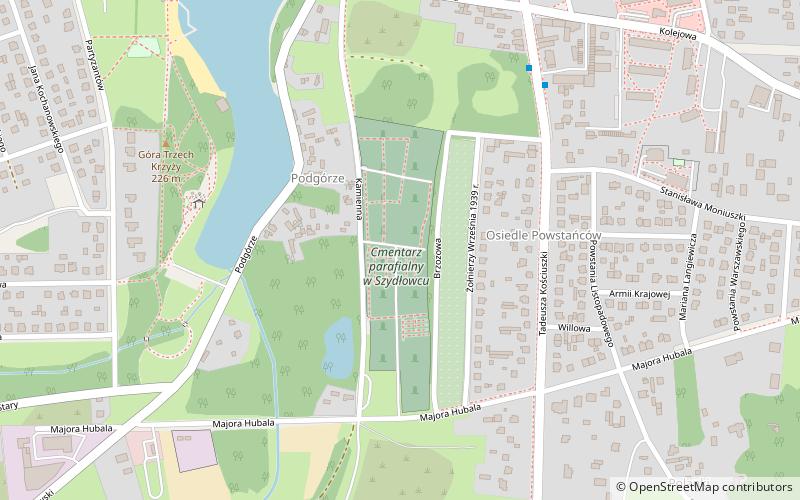Cmentarz parafialny w Szydłowcu, Szydłowiec


Facts and practical information
Szydłowiec Communal Cemetery, pot. c. Catholic a. c. Christian - a communal necropolis, was established in the early 19th century south of Szydłowiec. The cemetery is located between Kamienna, Brzozowa and Hubala streets. The oldest gravestones are dated back to 1811. There are two historic soldiers' cemeteries: the Monument of the Unknown Polish Soldier killed during World War I and the Polish-Bolshevik War, the War Cemetery of the Austro-Hungarian, German, and Russian Armies killed in 1914-1918, the War Cemetery of the Polish Soldiers killed for their country on September 8, 1939 in Barak, and the soldiers of the Home Army killed during the German occupation.
In the historical development three main parts of the cemetery were formed: the old one in the north, the middle one and the new one in the south.
Most of the burials are in the Roman Catholic stream, but also in the Orthodox and Evangelical churches. There is no information about non-denominational burials.
There are numerous antique tombstones in the shape of angels, Christ carrying the cross, classical columns, trees, tombstones with a carved skull and tibias, a cross and a palm tree. Three gates lead to the cemetery from Kamienna St. and one gate from Brzozowa St. In front of the entrance to the new cemetery there is a Baroque statue of St. John of Nepomuk, probably from the area of the castle, restored in 1900. During World War II the area was hit by several bombs, which made the oldest part of the cemetery irregularly arranged.
In 2009 Szydłowiec Town Council by the resolution no 208/XLIII/09 established a communal cemetery south of the parish cemetery.
Cmentarz parafialny w Szydłowcu – popular in the area (distance from the attraction)
Nearby attractions include: St Sigismund's Church, Zamek w Szydłowcu, Muzeum Instrumentów Muzycznych, Cmentarz żydowski w Szydłowcu.







